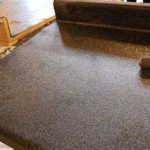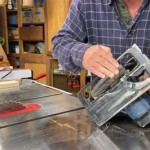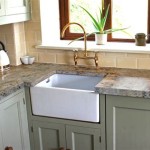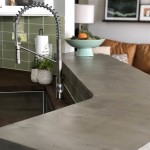Covering Countertops With Stainless Steel
Stainless steel countertops have gained popularity in both residential and commercial settings due to their durability, hygiene, and modern aesthetic. Covering existing countertops with stainless steel is a viable option for homeowners and business owners seeking to upgrade their surfaces without the cost and disruption of a complete countertop replacement. This article will explore the benefits, considerations, installation process, and maintenance of covering countertops with stainless steel.
Stainless steel, an alloy primarily composed of iron, chromium, and other elements, offers inherent resistance to corrosion, staining, and heat. These properties make it an ideal surface for food preparation, heavy use, and environments requiring strict sanitation. When applied as a covering, stainless steel transforms existing countertops, providing a seamless, durable, and visually appealing surface.
The Advantages of Stainless Steel Countertop Coverings
Choosing to cover countertops with stainless steel offers several distinct advantages. These benefits extend beyond aesthetics, providing practical solutions for hygiene, durability, and long-term value.
Hygiene and Sanitation: Stainless steel is non-porous, meaning it does not absorb liquids or harbor bacteria. This characteristic makes it exceedingly hygienic, a crucial factor in kitchens and food preparation areas. The smooth, seamless surface of stainless steel is easy to clean and sanitize, reducing the risk of cross-contamination. Regular cleaning with mild soap and water is typically sufficient to maintain a clean and hygienic surface. This ease of cleaning is particularly important in environments where food safety is paramount.
Durability and Longevity: Stainless steel is exceptionally durable and resistant to damage from heat, water, and impacts. It can withstand the rigors of daily use, making it a long-lasting investment. Unlike some other countertop materials, stainless steel does not chip, crack, or stain easily. Its resistance to heat allows for the placement of hot pots and pans directly on the surface without causing damage. This durability translates to fewer repairs and replacements over the lifespan of the countertop.
Modern Aesthetic: Stainless steel offers a sleek, modern aesthetic that complements a variety of design styles. Its clean lines and metallic sheen can enhance the visual appeal of a kitchen or workspace. The reflective surface of stainless steel can also brighten a room, making it feel more spacious and airy. This aesthetic appeal is a key factor for many homeowners and business owners seeking to update the look of their space.
Cost-Effectiveness: Covering existing countertops with stainless steel can be a more cost-effective alternative to replacing them entirely. The labor and material costs associated with covering are typically lower than those involved in a complete replacement. This cost savings can be significant, particularly for large countertops or in situations where the existing countertop structure is sound. Furthermore, the long lifespan of stainless steel reduces the need for future repairs or replacements, contributing to long-term cost savings.
Increased Home Value: Stainless steel countertops are often perceived as a premium feature in homes, which can increase the overall value of the property. This is especially true in kitchens, where updated features and modern appliances are highly valued by potential buyers. Investing in stainless steel countertops can be a strategic way to enhance the appeal and marketability of a home.
Considerations Before Covering Countertops with Stainless Steel
While covering countertops with stainless steel offers numerous advantages, it is essential to consider various factors before proceeding with the project. These considerations relate to the existing countertop, the desired finish, and the installation process.
Existing Countertop Condition: The existing countertop must be structurally sound and free from significant damage. A warped, cracked, or otherwise unstable countertop may not provide a suitable base for the stainless steel covering. Addressing any underlying issues is crucial to ensure the stability and longevity of the new surface. In some cases, minor repairs may be necessary to prepare the countertop for the covering. However, if the existing countertop is severely damaged, replacement may be a more appropriate solution.
Seam Placement: Large countertops may require multiple sheets of stainless steel, resulting in seams. Careful planning is necessary to minimize the visibility of seams and ensure a smooth, aesthetically pleasing surface. The placement of seams should be strategically considered to avoid areas that are subject to heavy use or frequent cleaning. Proper welding and finishing techniques are essential to create seamless and watertight seams.
Edge Detailing: The edges of the stainless steel covering can be finished in various ways, including bullnose, square, and waterfall edges. The choice of edge detailing will impact the overall look and feel of the countertop. Bullnose edges are rounded and provide a softer, more traditional look, while square edges offer a clean, modern appearance. Waterfall edges extend the stainless steel down the sides of the cabinets, creating a dramatic and luxurious effect.
Gauge of Stainless Steel: The gauge of the stainless steel refers to its thickness. Thicker gauges are more durable and resistant to dents and scratches, but they are also more expensive. The appropriate gauge will depend on the intended use of the countertop and the desired level of durability. For residential kitchens, a 16- or 18-gauge stainless steel is typically sufficient. However, for commercial kitchens or high-traffic areas, a thicker gauge may be necessary.
Finish Options: Stainless steel is available in a variety of finishes, including brushed, polished, and embossed. The choice of finish will impact the overall look and feel of the countertop and its resistance to scratches and fingerprints. Brushed finishes are less prone to showing scratches and fingerprints, while polished finishes offer a sleek, reflective appearance. Embossed finishes add texture and visual interest to the surface.
The Installation Process
The installation of stainless steel countertop coverings requires specialized skills and equipment. It is generally recommended to hire a professional fabricator and installer to ensure a proper and durable result. The installation process typically involves the following steps:
Template Creation: The first step is to create an accurate template of the existing countertop. This template will be used to fabricate the stainless steel covering. Accurate measurements are crucial to ensure a perfect fit. The template should account for any irregularities in the countertop and any desired edge detailing.
Fabrication: The stainless steel covering is fabricated based on the template. This process involves cutting, bending, and welding the stainless steel to the precise dimensions specified in the template. The fabrication process requires specialized equipment and expertise to ensure accuracy and quality. Seams are carefully welded and polished to create a seamless and watertight surface.
Substrate Preparation: The existing countertop surface must be properly prepared to ensure a strong bond with the stainless steel covering. This may involve cleaning, sanding, and leveling the surface. Any imperfections or irregularities in the countertop should be addressed before applying the adhesive. A clean and smooth surface is essential for a successful installation.
Adhesive Application: A high-quality adhesive is applied to both the stainless steel covering and the existing countertop. The adhesive should be specifically designed for bonding metal to the substrate material. The adhesive should be applied evenly and according to the manufacturer's instructions. Proper ventilation is essential during the adhesive application process.
Installation and Securing: The stainless steel covering is carefully placed onto the countertop and secured using clamps or weights. The adhesive is allowed to cure according to the manufacturer's instructions. Care must be taken to ensure that the stainless steel is properly aligned and that there are no air pockets or gaps between the covering and the countertop. Once the adhesive has cured, the clamps or weights are removed.
Seam Welding and Polishing (if applicable): If the countertop requires multiple sheets of stainless steel, the seams are welded together to create a seamless surface. The welds are then ground and polished to create a smooth and invisible transition. This process requires specialized skills and equipment to ensure a high-quality finish. The polishing process should be carefully controlled to avoid damaging the stainless steel surface.
Final Finishing and Sealing: Once the installation is complete, the edges and seams are finished and sealed to prevent water penetration. The entire surface is cleaned and polished to remove any fingerprints or smudges. A sealant may be applied to protect the stainless steel and enhance its appearance. The final step is to inspect the countertop for any imperfections and make any necessary adjustments.
After installation, regular cleaning and maintenance are necessary to preserve the appearance and functionality of the stainless steel covering. Mild soap and water are typically sufficient for routine cleaning. Abrasive cleaners should be avoided, as they can scratch the surface. Periodic polishing with a stainless steel cleaner will help to maintain its shine and prevent staining.

Made To Measure Stainless Steel Kitchen Worktops

The Versatility And Durability Of Zinc Sheets For Countertops Belmont Metals

Made To Measure Stainless Steel Kitchen Worktops

Where To Find Metal Counter Edge Trim Steel Aluminum And Faux Retro Renovation

5 Quick Ways To Cover Kitchen Countertops Without Replacing Them Proline Range Hoods

Quick Ship Stainless Steel Countertops Standard Sizes Supply

What S The Difference Metal Countertops Fine Homebuilding

Custom Stainless Steel Countertops Island Tops

Eeekit 2pcs Silicone Stove Gap Covers Heat Resistant Kitchen Counter Fillers Easy To Clean 21 Black

20 Ideas For Kitchen Counter Updates Extra Space Storage
See Also








